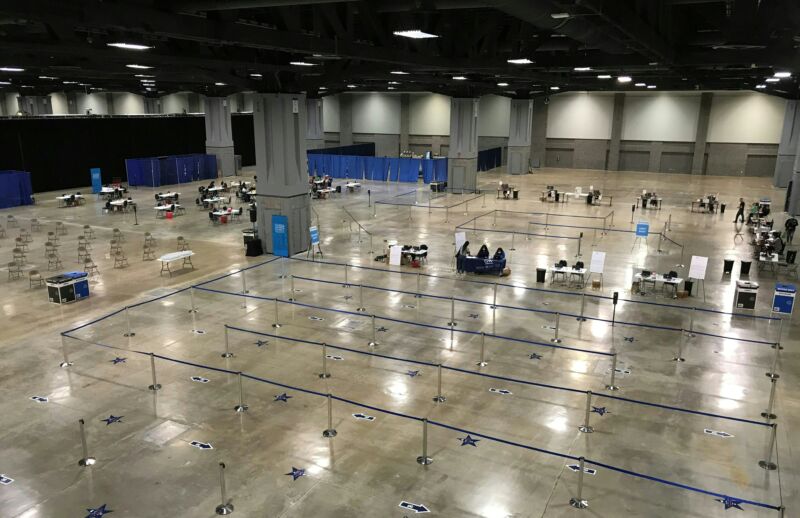
The United States is expected to miss the Biden administration's target of having 70 percent of adults vaccinated with at least one dose of a COVID-19 vaccine by July 4. Instead, the country will fall shy of the goal by just a few percentage points.
Currently, about 66.5 percent of adults have received at least one dose of a COVID-19 vaccine. To reach the target of 70 percent, around 9 million unvaccinated adults—those ages 18 and over—would need to get a vaccine dose over the next three days. Though the number of daily vaccinations has risen slightly in the past week, only around 1.37 million vaccine doses were administered on June 30, bringing the seven-day average of daily doses administered up to about 945,000. And that number includes second doses and doses given to those between the ages of 12 and 17, who are not included in President Joe Biden's target.
Though we'll only just miss the vaccine goal, new polling data highlights just how hard it is becoming to get those small slivers of the population vaccinated going forward.
While about 65 percent of polled adults say they've already gotten their COVID-19 vaccine, only 3 percent say they still plan to get vaccinated as soon as possible. The rest responded that they would "wait and see" (10 percent), only get vaccinated if required (6 percent), or would "definitely not" get vaccinated (14 percent).
Unmoved and vulnerable
The proportion of the "definitely not" crowd has largely gone unchanged throughout the survey, which began last December and is run monthly by the Kaiser Family Foundation. Throughout the survey, between 13 percent and 15 percent of polled adults have fallen into the "definitely not" category. Likewise, the "only if required" proportion has fluctuated between 6 percent and 7 percent since January.
Meanwhile, the "wait and see" proportion has dwindled considerably, shrinking from 39 percent in December to the current 10 percent in the June data. However, the remaining 10 percent may be harder than ever to sway. Of those remaining wait-and-see adults, 61 percent said they worry that current vaccines won't be effective against variants. (Mounting data continues to show that current vaccines are effective against all of the concerning variants circulating in the US). And 43 percent said the number of cases is so low that there is "no need for more people to get the vaccine."
Overall, the country's current lowered rates of cases, hospitalizations, and deaths—mainly attributable to highly effective vaccines and successful vaccination efforts—appears to be acting as a deterrent for further vaccinations. Among all unvaccinated people polled, 50 percent said the low case numbers mean there is no more need for people to get vaccinated. And among just the people who said they would "definitely not" get vaccinated, 67 percent said the low case counts make vaccination unnecessary.
In the meantime, experts are raising alarms over the looming risk of COVID-19 outbreaks and surges in areas with low vaccination rates. In a White House press briefing Thursday, Rochelle Walensky, director of the Centers for Disease Control and Prevention, noted that around 1,000 counties, primarily in the Southeast and Midwest, have vaccination coverage of less than 30 percent. "These communities... are our most vulnerable," Dr. Walensky said. "In some of these areas, we are already seeing increasing rates of disease. As the Delta variant continues to spread across the country, we expect to see increased transmission in these communities unless we can vaccinate more people now."
reader comments
342